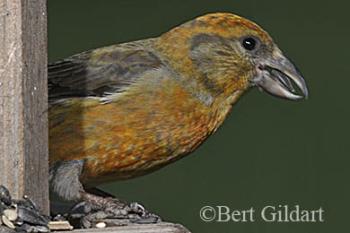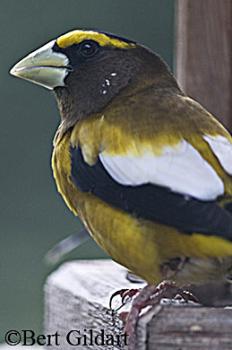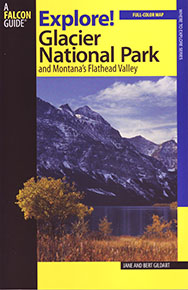By Their Beaks Shall Ye Know Them, Chapter Two

Red Crossbill
©Bert Gildart: Here are two new species of birds that have recently started showing up at our feeder in Creston, Montana. They provide a continuation of the posting I made last year, entitled “By Their Beaks Shall You Know Them .” That posting was made from Florida’s Ding Darling National Wildlife Refuge and is the same kind of information I use when bird watching here in Montana, and in particular, during our many outings to Glacier National Park.
The first species shown here is a Red Crossbill, and if you look closely, you will see that the lower mandible passes beneath the upper mandible, enabling the species to pry out seeds from unopened pine cones.
True to form the species is gregarious and is just one of the many Crossbills now seeking sustenance from our feeder.
CROSSBILLS AND THE CRUCIFIXION
According to Tom Ulrich in his book Birds of the Northern Rockies, the species carries with it a legend that traces back to the crucifixion. As the story goes, a small bird alighted on the cross and attempted to pull the nails from Jesus’s hands and feet. The bird tried so hard that its bill became badly twisted and its plumage covered with blood. As a result, we have a bird with an orange-tinged breast and mandibles that are crossed.
The second species appearing this week at our feeder is the Evening Grosbeak, where it assumes the role of a “King of the Hill.” Constantly bickering for position, the bird moves into the largest pile of seeds, relegating the chickadees, siskins and the brown creepers to the back of the feeder where seeds are fewer in number.

Evening Grosbeak
The bird is a colorful individual and we easily determine gender by the yellow band across its forehead above the eyes. The species has a massive set of mandibles enabling it to perform with brute strength what the Crossbill does with finesse.
MORE AVIAN ESPERANTO
With the return of these two species our feeder is now attracting a goodly number of species, suggesting to us that Sam Keen was correct when he spoke of an “Avian Esperanto” in his book Sightings.
Though our feeder was neglected for almost four months while Janie and I were traveling, somehow about 20 different species now know we’re back and that there is an easily obtainable source of food available at the Gildart’s. If that’s not some form of universal communication then please tell me what to call it.
The birds are here, of course, because of their beaks, which enable them make use of the food source–seeds–which we supply in abundance.
Our Pileated Woodpeckers are also back, and that’s because we supply the suet they can poke at with their long pointed beaks. On the other hand, though we see Robins all around, we never see them at our feeder, and that’s, of course, because we don’t supply the bugs and worms that their beaks can accommodate. In those ways, then, Ye Shall know Them.
AND NOW, THE COMMERCIAL:
If you’re interested in exploring the Flathead Valley and Glacier National park, here are two books produced by Falcon Press, one part of their Exploring Series, the other one of a new series of “Pocket Guides.” Janie and I, of course, are the authors and you can obtain both from us, or directly from Falcon. Look for them, too, in bookstores and in Glacier.

Exploring Guide

Glacier Pocket book


May 31st, 2008 at 3:23 pm
Bert.. my dear friend. It’s so good to read your blog again. I had misplaced the link to your blog when we reformated our computer. I have you back in my bookmarks now!
We don’t see many grosbeaks here. I keep the feeders full for the regular bird guests and the suet cake is a favorite for the Mockingbirds and Red bellied woodpeckers.
Enjoy your weekend and give Janie a hug for me.